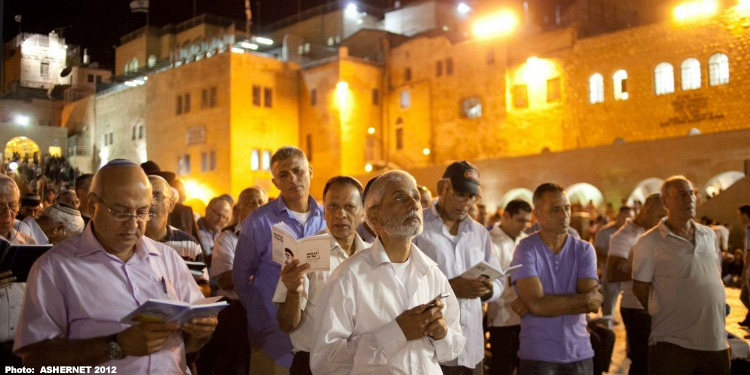What is Yom Kippur?

Yom Kippur, the Jewish Day of Atonement, is observed on the tenth day of the month of Tishrei on the Hebrew calendar, which falls in September or October on the Gregorian calendar (the calendar in common use throughout the world).
This day marks the culmination of the High Holy Days or Ten Days of Repentance, which began ten days earlier with Rosh Hashanah, Yom Kippur offers Jews the final opportunity of the year to repent of their sins. It is the holiest day of the Jewish year or, as the Bible describes it, the “Sabbath of Sabbaths.” The Bible states,
“This is to be a lasting ordinance for you: On the tenth day of the seventh month you must deny yourselves and not do any work—whether native-born or an alien living among you—because on this day atonement will be made for you, to cleanse you. Then, before the LORD, you will be clean from all your sins. It is a sabbath of rest, and you must deny yourselves; it is a lasting ordinance” (Leviticus 16:29–32).
During the 24-hour period of Yom Kippur, Jews fulfill this biblical commandment to deny themselves by fasting from food and water, engaging in intense soul-searching, and praying for forgiveness.
From the evening of the holiday until sundown the following day (except for the few hours when they go home to sleep), Jews are in the synagogue beseeching God for forgiveness and reflecting upon the course of their lives. An entirely different synagogue liturgy is used every year only on this day.
Yom Kippur is a day of inner purification and of reconciliation with God and fellow human beings. Judaism insists, however, that repenting, fasting, and praying atone only for those sins between man and God. Those sins committed against their fellow man require that Jews seek forgiveness personally from those they have offended as well as from God.
Fasting on Yom Kippur is a physical act meant to prod Jews on to spiritual matters. It is a reminder of the frailty of human existence and of the duty to act charitably toward the less fortunate. The inspiring, yet sobering, words of the 58th chapter of Isaiah are read publicly in the synagogue on Yom Kippur to reveal the true meaning of the Yom Kippur fast:
“Is not this the kind of fasting I have chosen,” says the prophet, “to loose the chains of injustice and untie the cords of the yoke, to set the oppressed free and break every yoke? Is it not to share your food with the hungry and to provide the poor wanderer with shelter—when you see the naked, to clothe him, and not to turn away from your own flesh and blood?” (Isaiah 58:6–7).
Evening services commence with the recitation of the Kol Nidrei prayer, one of the most powerful and emotionally evocative in all of Jewish liturgy. Kol Nidrei is a plea for absolution from any and all unfulfilled vows a person may have made in the course of the year.
At every opening Yom Kippur service, Jews feel an abundance of emotions as they listen to the sorrowful strains of the Kol Nidrei melody and recall their history of persecution and suffering. Both the words and the melody of the prayer end in a triumphant note of optimism, leading from despair to hope. This prayer encapsulates the Jewish historical experience and vision for the future.
